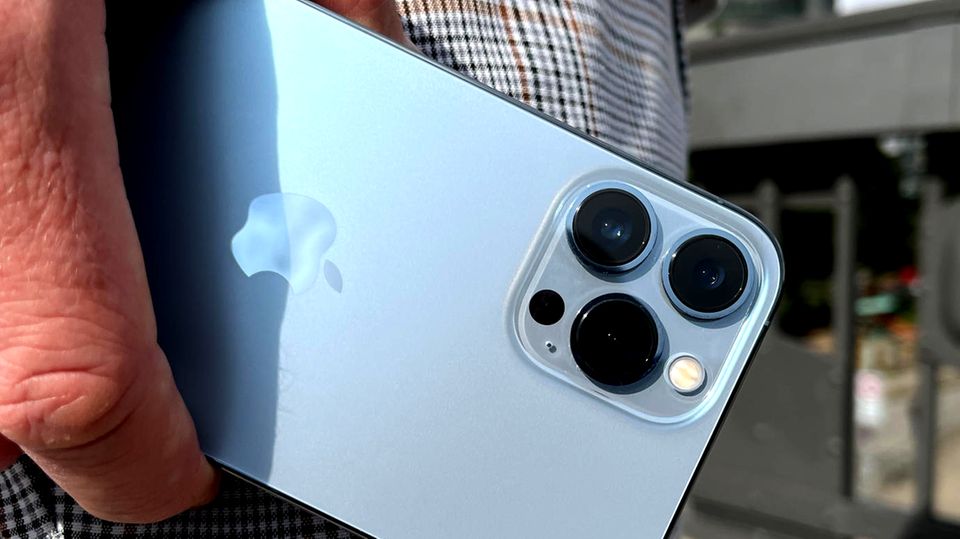With the two models in its Pixel series, Google wants to know: A new, very distinctive look, strong technology and even better artificial intelligence should make it play at the forefront. Android fans should sit up and take notice, especially because of the update promise.
Let your own Android operating system shine in a top smartphone – that is the mission of Google’s Pixel series. But although the first five generations were absolutely convincing and were able to score especially with the cameras, so far there has been no real breakthrough. The new Pixel 6 and Pixel 6 Pro are set to change that. And rely on the iPhone’s recipe for success.
Above all in two respects, Google is imitating its big competitor: The two new Pixel models are using a processor developed by Google for the first time. And: They should be equipped with the latest Android version for a full four years. In fact, this has never happened before in the Android world.
Model iPhone
Google has also learned from Apple when it comes to design – albeit indirectly. Because the new Pixel 6 doesn’t look similar to the iPhone, but they try to establish a similar iconic look in order to stand out from the crowd of Android devices. Whether you like the idiosyncratic design with the distinctive crossbar for the camera and up to three colors in a single housing is certainly a matter of taste. Apart from the size and the different color combinations, the Pixel 6 and its Pro model do not differ fundamentally in terms of design.
Both devices also bring the chip called Tensor, developed by Google itself. Speed records like the last iPhone 13 Pro Max (here in our test) are probably not to be expected from the Google chip. Instead, the group focuses on what it does best: The chip is fully geared towards making optimal use of the group’s strong artificial intelligence. And should bring all sorts of previously unknown tricks to the new smartphones in everyday life.
The smarter smartphone
Live translation of texts should be possible with Tensor – even in chat apps from other manufacturers. This makes it possible, for example, to have a conversation in WhatsApp with a person whose language you don’t actually speak, promises Google. Initially only eleven languages are supported, but German is one of them. Google also wants to be able to translate audio clips live, but apart from German, only four other languages are available.

But Google wants to be able to offer completely new possibilities in other areas as well. There is, for example, the new image processing. With a post-processing tool called a “magic eraser”, unwanted parts of pictures can be removed with little effort, such as the passers-by in the background of the family picture in the park. Based on the image information, the pixel fills the gaps with suitable content and allows the disruptive parts of the image to disappear almost without a trace. That actually looked very impressive in the presentations.
Strong Knipse
But the camera has also learned other smart tricks. The AI-supported notch of the Pixel series has long been considered the best smartphone cameras, now Google wants to expand this further. After relying on the same hardware for a long time, Google is finally giving its new models a new lens system.
But there is a difference between the models. The Pixel 6 comes with a double camera with 50 MP main cameras and an ultra-wide angle with 12 MP, while the Pixel 6 Pro also has a telephoto lens. As with some top models from Samsung, Huawei and Co., it relies on a horizontal lens system in order to be able to implement a real four-fold zoom. The front camera has also been redesigned and now offers 8 MP (Pixel 6) or 12 MP (Pixel 6 Pro).
The real magic still happens in post-production. A revision of the photo algorithm should now enable even better photos. Google promises, for example, an action mode that is supposed to put moving objects in scene in a more spectacular way. It should also be able to recognize blurred faces, for example in children playing, and restore them sharply. The group also attached particular importance to the efforts to be able to present people’s skin tones in all possible light situations in a natural and nuanced way. Many smartphones fail here in post-processing.
Privacy as a feature
The promise of more privacy is also inspired by Apple. Many of the calculations take place on the device itself, even translations now work offline, promises Google. A new security hub should also allow more control over which data apps retrieve and allow the authorizations for location, camera and Co. to be managed more clearly.
Prices and availability
Both new models will hit the market on October 26th. The Pixel 6 is priced at 649 euros, while the Pixel 6 Pro is available from 899 euros.
The technical data of the new pixels at a glance:
| Pixel 6 | Pixel 6 Pro | |
| Display | 6.4 Zoll OLED 1080 x 2400 Pixel Up to 90 Hertz |
6.7 Zoll OLED 1440 x 3120 Pixel Up to 120 Hertz |
| Processor and memory | Tensor-Chip 8 GB of RAM 128 GB data storage |
Tensor-Chip 12 GB of RAM 128 or 256 GB of data storage |
| Camera | Wide angle 50 MP (main camera) Aperture: ƒ / 1.85 12 MP Ultraweitwinkel Aperture: ƒ / 2.2 Detection angle: 114 ° |
Wide angle 50 MP (main camera) Aperture: ƒ / 1.85 48 MP Telephoto Lens Camera Aperture: ƒ / 3.5 4x optical zoom 12 MP Ultraweitwinkel Aperture: ƒ / 2.2 Detection angle: 114 ° |
| battery pack | 4614 mAh | 5003 mAh |
David William is a talented author who has made a name for himself in the world of writing. He is a professional author who writes on a wide range of topics, from general interest to opinion news. David is currently working as a writer at 24 hours worlds where he brings his unique perspective and in-depth research to his articles, making them both informative and engaging.



